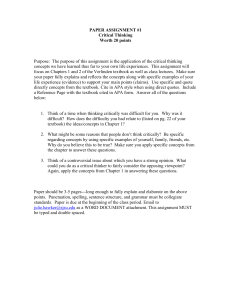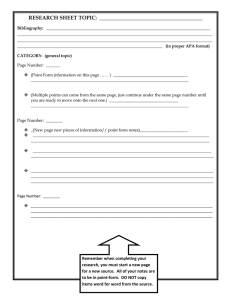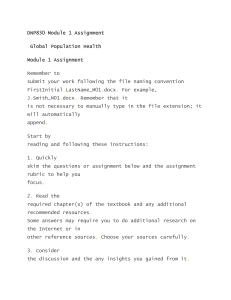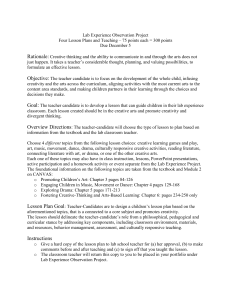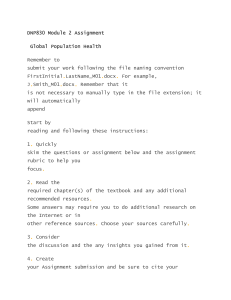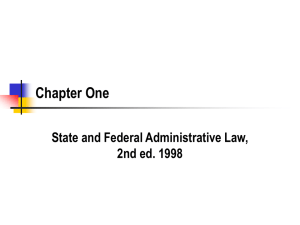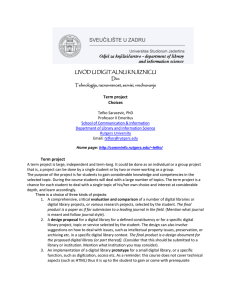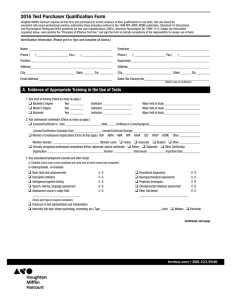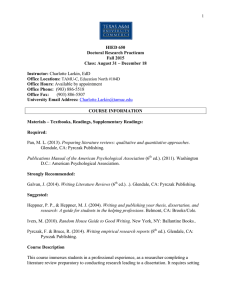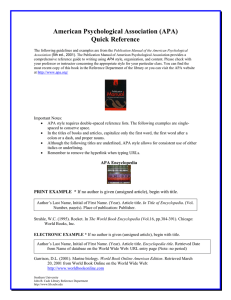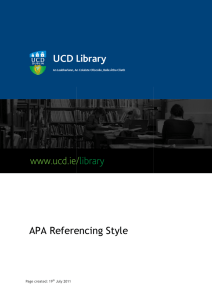0342-READING PRESENTATION GUIDE.doc
advertisement
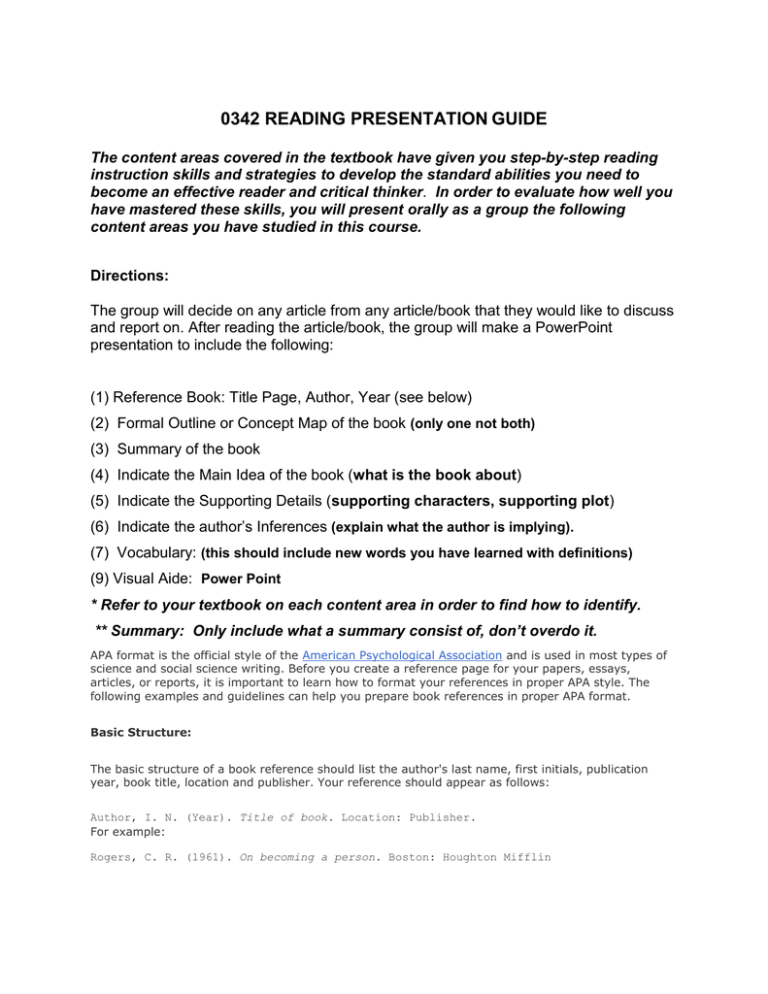
0342 READING PRESENTATION GUIDE The content areas covered in the textbook have given you step-by-step reading instruction skills and strategies to develop the standard abilities you need to become an effective reader and critical thinker. In order to evaluate how well you have mastered these skills, you will present orally as a group the following content areas you have studied in this course. Directions: The group will decide on any article from any article/book that they would like to discuss and report on. After reading the article/book, the group will make a PowerPoint presentation to include the following: (1) Reference Book: Title Page, Author, Year (see below) (2) Formal Outline or Concept Map of the book (only one not both) (3) Summary of the book (4) Indicate the Main Idea of the book (what is the book about) (5) Indicate the Supporting Details (supporting characters, supporting plot) (6) Indicate the author’s Inferences (explain what the author is implying). (7) Vocabulary: (this should include new words you have learned with definitions) (9) Visual Aide: Power Point * Refer to your textbook on each content area in order to find how to identify. ** Summary: Only include what a summary consist of, don’t overdo it. APA format is the official style of the American Psychological Association and is used in most types of science and social science writing. Before you create a reference page for your papers, essays, articles, or reports, it is important to learn how to format your references in proper APA style. The following examples and guidelines can help you prepare book references in proper APA format. Basic Structure: The basic structure of a book reference should list the author's last name, first initials, publication year, book title, location and publisher. Your reference should appear as follows: Author, I. N. (Year). Title of book. Location: Publisher. For example: Rogers, C. R. (1961). On becoming a person. Boston: Houghton Mifflin
